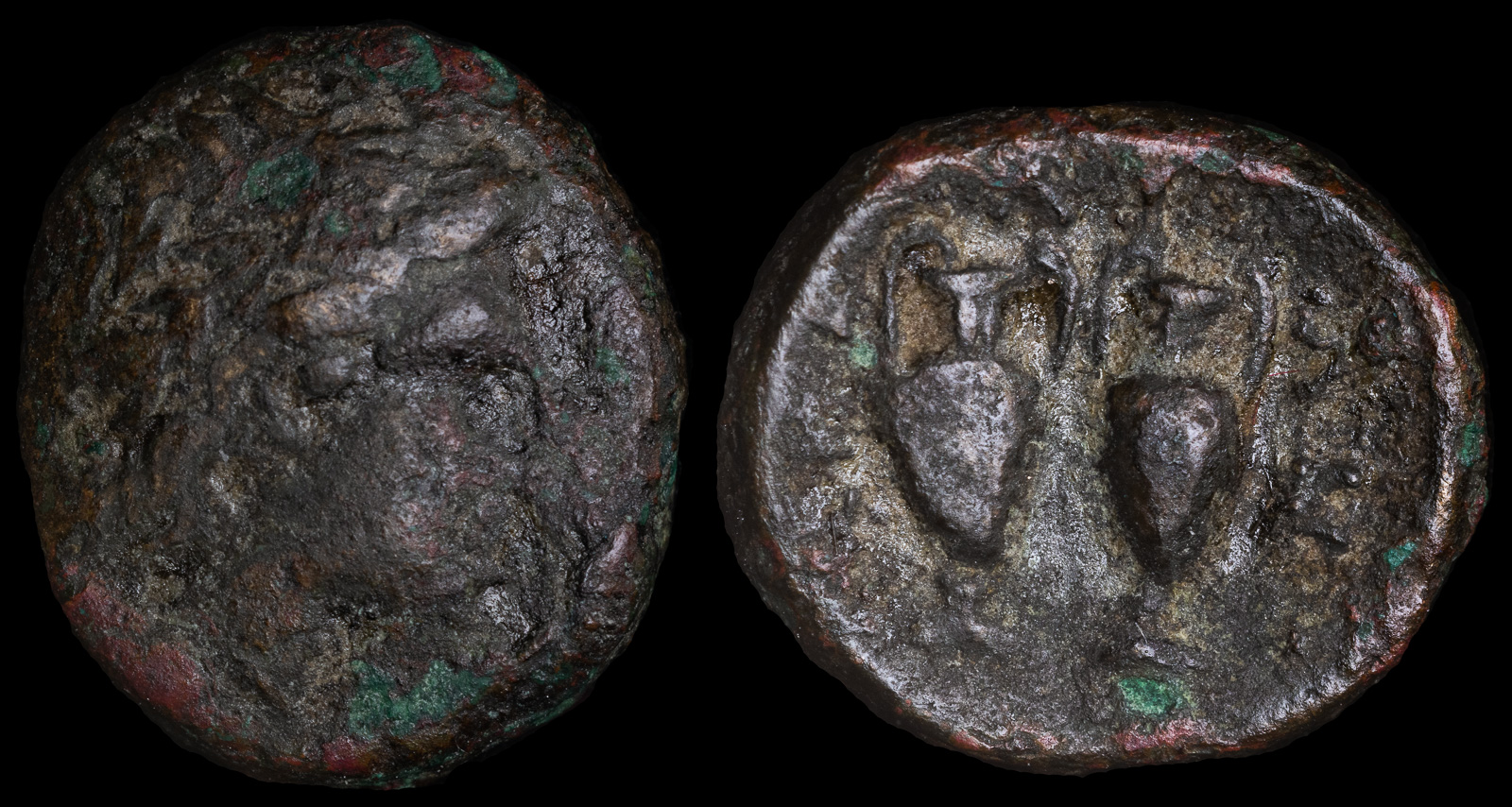
Macedonia, Mende
400 – 350 BCE
AE 14mm 2.6g
Head of Dionysos right, wearing ivy wreath /
Two amphorae.
SNG ANS 931-4
Mende was a powerful city on the Chalkidike peninsula that received its name from a species of mint that grows in the area. The city was long a strong ally of Athens, but when they switched sides during the Peloponnesian War, they were besieged and overrun by the Athenians.
Aristotle used the city as an example in his Economics, where he mentioned that the city usually paid its bills from harbor fees and other duties. They didn’t tax houses and land, but did keep a register of all owners, so during emergencies they could turn to them.
From legend, the city was founded by Eretrians, possibly around the time of the Trojan War. Archeological finds have suggested that this may be true based on pottery finds. This coin depicts Dionysos, who was widely worshipped across nearby Thrace.
Philip II conquered the area and brought it under Macedonian rule, and the city came to an end in 316 BCE when Kassander forced them to move to his new city of Kassandreia.
Approximate colonization of Mende by Eretrians.
Mende attempts to revolt against Athenian rule, but is repressed.
Kassander founds Kassandreia from Potidaia and Mende, founds Thessalonika, and rebuilds Thebes.